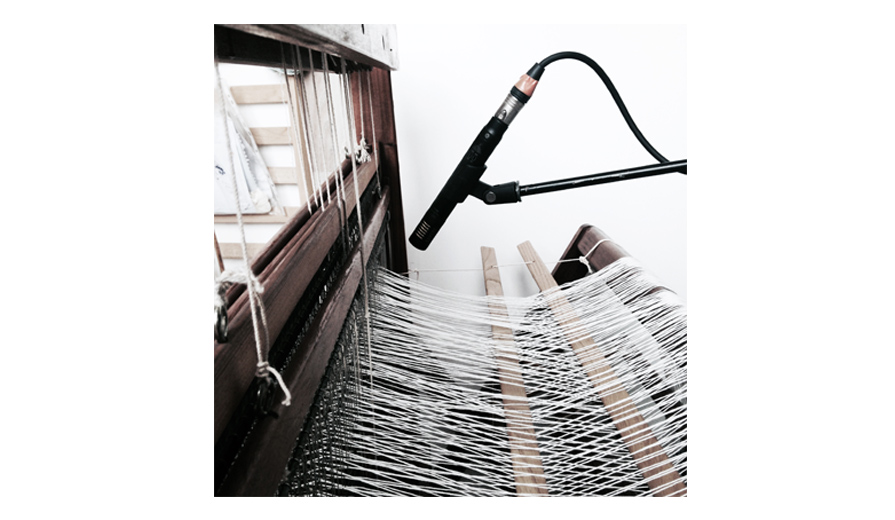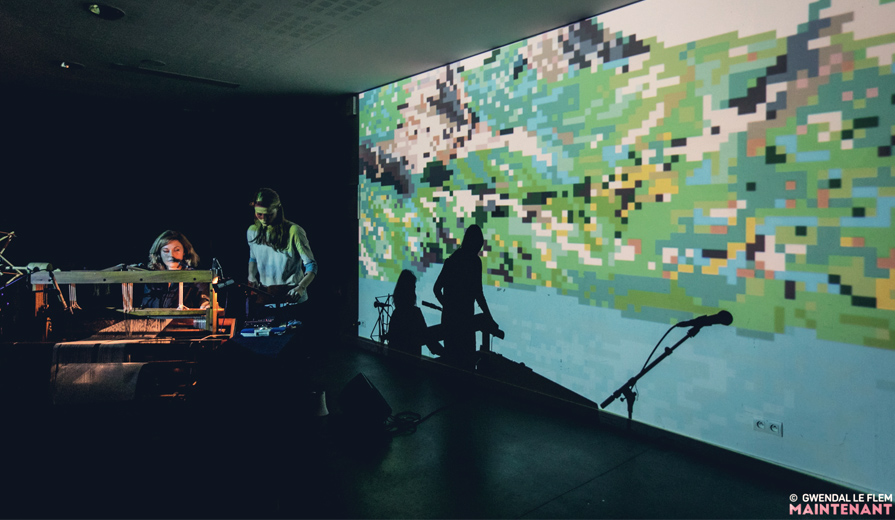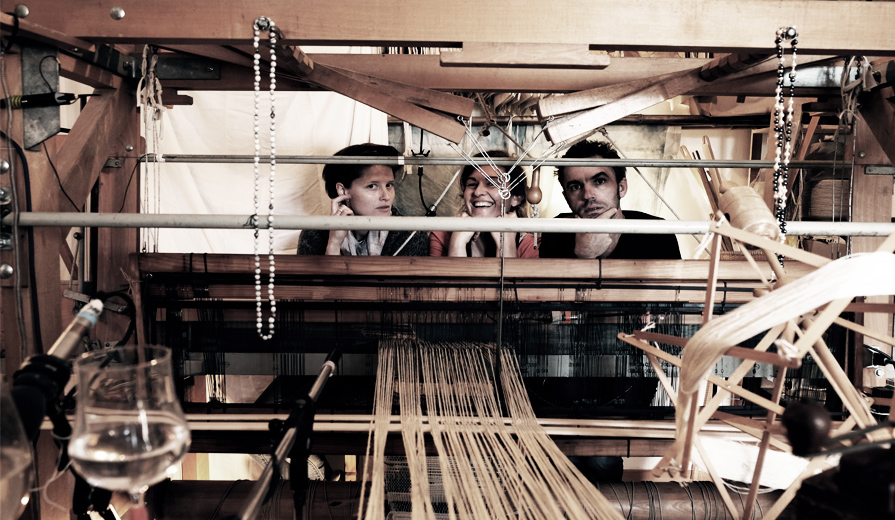
Montage vidéo Romain Bourgin
The first time I picked up a loom, I had the physical sensation that I was about to play a musical instrument. The creation of a piece of textile, a piece of music.
In music, there is a chronological relationship
1-partition 2- simultaneous gesture/sound.
In the weaving process, there is also a score (context). The textile, which is produced as a trace at the same time as the music is played, is added to the simultaneity of gesture/sound/fabric (image).
It is this interdependence of the simultaneous trio that is the basis of the mechanics of the device. It is the result of research carried out since 2014 in collaboration with sound, music and image professionals. Graphic designers, sound artists, musicians, video artists, writers, architects, designers and researchers have gradually enriched the project with their vision, to give shape to what looks like a textile song
In the trio Geste- sound – image made/ questioning the interdependence of image and sound
In the context of the sound loom and the work Paysages sonores that we presented during the “textile night 2.0”, where the threads pass, the sound passes. For this performance, we propose a process where the image of weaver’s scores (contextures) reworked into sound landscapes, is projected on a wall and scrolls in synchronicity with the “pieces” of weaving that are being constructed. By making the spectator question the relationship between image and sound, inviting him to ask himself whether it is the sound that creates the image, or the image that creates the sound, he is propelled into the process of making the textile.
Through a defined sound bias, an illustration of the evolution of weaving work in history is constructed. With songs from the loom and the sound of selected places on the loom, we question and explore the jobs/works that make music.


The archaeology of the image :
The inventor of the punch card loom was Mr. Basile Bouchon who worked in a weaving workshop.
He was the son of a barrel organist, and so he came up with the idea of applying the same process to the loom. Instead of producing music, the punch card loom produces patterns, images.
Where the sound passes, the threads pass.
This binary code of full and empty gave rise to the coding of textiles and the transformation of hand looms into Jacquard looms. This device served as the basis for the development of the first computer screens.
Here, the sound loom questions the place of the image, particularly the screen, in our lives today, a prism that is probably the one through which you are now reading this. The return to the roots of this technology is one of the characteristics of the sound loom. This return to the essence of the image, as a backdrop to the 2d fabric, is what allowed the first phase of the project to be played in public (MAINTENANT festival of arts, music and new technologies).